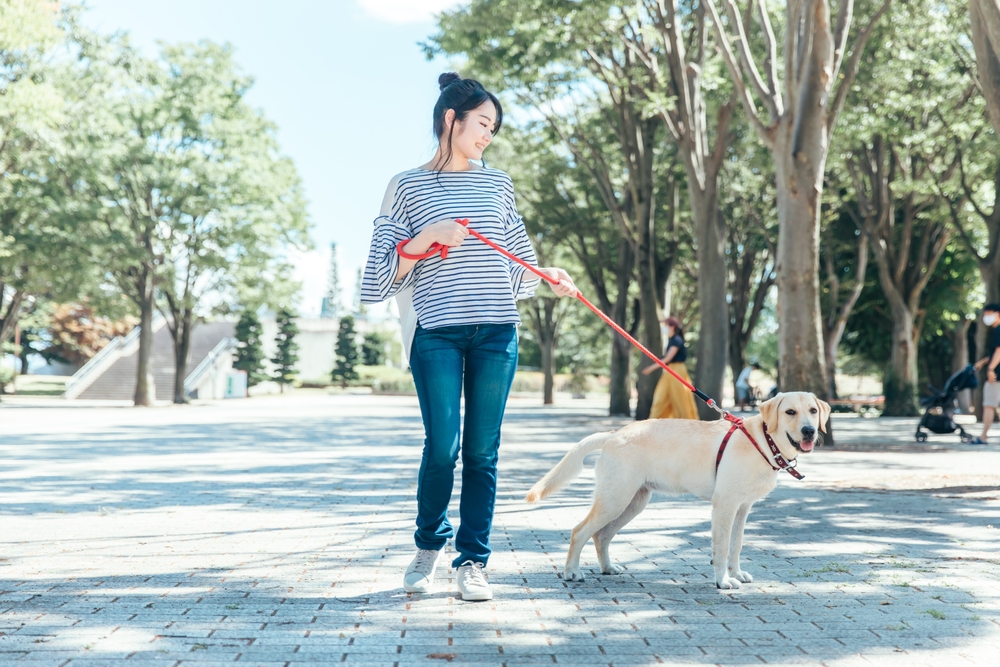If you’ve ever tried calling your dog’s name at the park only to be ignored in favor of a squirrel, another dog, or even a leaf blowing in the wind, you know how frustrating distractions can be. Distractions are one of the biggest obstacles in training, but with patience, consistency, and the right strategies, you can teach a distracted dog focus even in the busiest environments.
At Innovative K9 Academy, we work with dogs of all temperaments and energy levels, helping them learn to tune out the chaos and pay attention to their handlers. Let’s break down why distractions are such a challenge and what you can do to build stronger focus.
Why Distractions Hinder Training Progress
Dogs live in a world of smells, sights, and sounds that we can barely comprehend. Their noses are thousands of times more sensitive than ours, and their natural curiosity often overrides even the most well-taught commands.
When distractions are present, your dog’s brain essentially shifts priorities: that squirrel, food wrapper, or stranger seems more rewarding than listening to you. This doesn’t mean your dog is stubborn or disobedient; it simply means you need to increase your value as the “best option” in the environment.
At Innovative K9 Academy, we remind owners that focus is a skill. Just like teaching “sit” or “stay,” it must be built gradually through practice and reinforcement.
Step-by-Step Focus-Building Exercises
Training focus starts small and gradually expands to more distracting settings. Here’s a progression to follow:
Start in a Quiet Space
Begin indoors or in your backyard with no major distractions. Practice calling your dog’s name and rewarding immediate eye contact. The goal is to make looking at you a habit.
Introduce the “Watch Me” Cue
Hold a treat at your eyes and say “watch me.” When your dog makes eye contact, reward generously. Repeat until your dog begins offering eye contact even without the cue.
Practice Short Training Sessions
Keep sessions under 10 minutes so your dog stays engaged. Frequent, positive repetitions will reinforce the behavior.
Add Low-Level Distractions
Try training while the TV is on, or with someone walking quietly across the room. Reward your dog every time they choose you over the distraction.
Build Duration
Once your dog can focus for a few seconds, increase the time before rewarding. This helps strengthen patience and attention span.
Using Rewards to Encourage Attention
Dogs repeat behaviors that pay off. That’s why rewards are at the heart of focus training. The key is finding what motivates your dog most.
- High-Value Treats: Save special snacks like cheese, chicken, or freeze-dried liver for training in distracting places.
- Play: For some dogs, tug toys or fetch are even more rewarding than food.
- Praise & Affection: Never underestimate the power of enthusiastic encouragement.
Remember, the reward should outweigh whatever distraction your dog is facing. If a squirrel is a 10/10 distraction, your treat or toy needs to be at least an 11/10 in value.
Gradually Increasing Distraction Levels
Rushing the process is one of the most common mistakes owners make. If you take your dog straight from the living room to a crowded dog park, you’re setting them up for failure.
Instead, use gradual exposure:
- Move training sessions to your driveway or front yard.
- Practice near lightly trafficked walking trails.
- Visit busier parks during quieter times before tackling peak hours.
- Slowly add more challenging distractions as your dog succeeds at each level.
Think of it as climbing a ladder—each rung must be mastered before moving to the next.
When to Seek Professional Help for Focus Issues
Some dogs, especially those with anxiety, fear, or high-drive temperaments, may need additional guidance to succeed. If your dog consistently struggles to focus despite structured training, professional help can make all the difference.
At Innovative K9 Academy, we specialize in helping distracted and reactive dogs learn to channel their energy into productive behaviors. Whether through one-on-one sessions, board-and-train programs, or structured group environments, our trainers provide tailored strategies that fit each dog’s unique needs.
Sometimes, focus struggles are not just about training—they may also stem from emotional responses or past experiences. Professional trainers can help identify these root causes and create a plan that works for both dog and owner.
Real-Life Success Stories
One of our clients came to us with a young Golden Retriever who pulled constantly on the leash and ignored commands at the park. Through structured focus-building exercises, he learned to check in with his handler every few steps, even when other dogs were nearby. Today, walks are calm and enjoyable for both.
Another case involved a rescue dog with a history of anxiety. She would fixate on noises and couldn’t concentrate during training. By breaking exercises into small, manageable steps and rewarding every bit of focus, she built confidence and learned to tune out the world around her.
These examples show that focus is possible, no matter how distracted a dog may seem at first.
Conclusion
Distractions don’t have to derail your dog’s progress. By building focus step by step, using meaningful rewards, and gradually increasing difficulty, you can teach your dog to look to you—even when the world around them is buzzing with excitement.
At Innovative K9 Academy, we’ve seen firsthand how transforming focus transforms the bond between dogs and their owners. With the right guidance and consistent practice, your distracted dog can learn to stay calm, attentive, and connected no matter the environment.
Ready to strengthen your dog’s attention skills? Begin today and teach a distracted dog focus with proven training methods that deliver lasting results.

